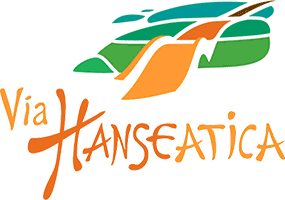FLAVOURS OF LIVONIA AND DISHES
From the XIII to XVI century, parts of Estonia and Latvia made up a unified country Livonia on the shores of the Baltic Sea, with geographical and economic ties, similar lifestyles and traditions. The native cuisine of locals originated from self-grown, hunted and caught produce; wild plants were also used. Due to the long winters, they developed elaborate skills to preserve products for a prolonged period of time.
Crops, legumes, dairy products, vegetables and greens, fish, livestock, birds and game meat were consumed according to one’s means and social status.
Here you will find a selection of traditional food with a preparation history coinciding with the Livonian historical period. Cheese, cottage cheese with hemp, milk with berries. Kama flour. Peas and beans. Sorrel and mushrooms. Barley porridge and rye bread. Sauerkraut and salted cucumbers. Salted sprats and herring. Smoked fish. Martin’s day rooster. Meat and lamprey that’s cooked on open fire.
Before 16th century the honey was the only sweetener that was available to people. Excellent beer and mead brewing traditions have been preserved from this time. Wheat pies, rolls and cakes were baked during festive occasions. During Livonian times exotic spices started to come to Europe through sea and land trading routes. Spices were very expensive, and only rich people could afford them. It became trendy to season the wine with herbs and spices.
Over time, Estonian and Latvian cuisine has been shaped by our nature and influenced by traditions of people of various nationalities, religions and social classes.






